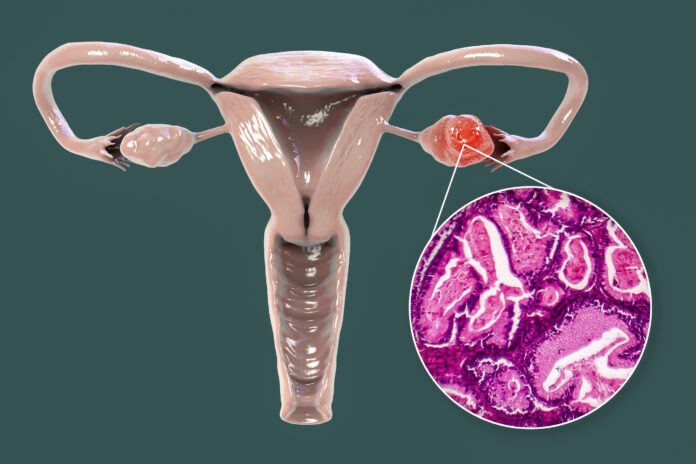The Science Of Health: Welcome back to “The Science Of Health”, ABP Live’s weekly health column. Last week, we discussed what preeclampsia is, why it occurs, the risk factors for the condition, and how pregnant women can prevent it. This week, we discuss which diseases women are more prone to than men, and why, and what experts say.
Women are more vulnerable than men to several diseases because of biological, genetic, lifestyle and social factors, according to experts. Also, there is a higher prevalence of certain diseases among women than in men.
Diseases women are more prone to than men
The diseases which women are more prone to than men include urinary tract infections, osteoporosis, autoimmune diseases, depression and anxiety, thyroid disorders, migraines, diabetes mellitus, cardiovascular diseases, and ocular conditions, among others, Dr Ankita Chandna, Associate Director, Obstetrics and Gynaecology, Max Super Speciality Hospital, Shalimar Bagh, told ABP Live.
Pregnancy and hormonal changes that occur due to a woman’s menstrual cycle may trigger the occurrence of some autoimmune illnesses, Dr Mithee Bhanot, Senior Consultant, Obstetrics and Gynaecology, Apollo 24|7, and Apollo Hospitals, Sector-26, Noida told ABP Live.
She also explained that pregnancy sometimes increases stress on the thyroid gland. Many women develop thyroid issues post-pregnancy.
ALSO READ | Science For Everyone: Why Colonising Mars Is Still Far From Reality
Urinary tract infections
A urinary tract infection is an infection in any part of the urinary system, which includes kidneys, ureters, bladder and urethra. Pain or burning while urinating, feeling the need to urinate despite having an empty bladder, pressure in the groin or lower abdomen, and frequent urination are some of the symptoms of urinary tract infections. These are more common in women than in men.
“Urinary tract infections are more prevalent in women due to anatomical differences. Women have shorter urethras compared to men, making it easier for bacteria to reach the bladder and cause infection. Hormonal changes during pregnancy or menopause can also affect the urinary tract and increase susceptibility to urinary tract infections,” Dr Chandna said.
ALSO READ | World Schizophrenia Day: Schizophrenia Is Beyond Hallucinations And Delusions. Know Its Unusual Symptoms
Osteoporosis
Osteoporosis is a bone disease that develops when bone mineral density and bone mass decrease, or when the quality or structure of the bones change, leading to a decrease in bone strength. It is a silent disease because one typically does not have symptoms, and may not even know they have the disease, until they break a bone. The disease increases the risk of fractures.
Bones can weaken at an earlier age in women than in men.
Oestrogen is a hormone that plays an important role in maintaining bone health in females, but the levels of oestrogen suddenly decline after menopause, leading to an accelerated loss of bone mass.
Also, the peak bone mass in women is less compared to men. Another reason why women could be more prone to develop osteoporosis is a lack of nutrition and care.
Since women age faster, they experience a higher and faster reduction in bone density, compared to men.
Postmenopausal women suffer from a lot of bone health problems, especially in the first ten years after menopause.
“Osteoporosis is usually seen in women during and post menopause as hormonal changes occur significantly at that time, particularly due to the drop in oestrogen levels. This hormone is a requisite for maintaining bone density. As its levels drop, bone loss increases,” Dr Bhanot said.
Also, women are prone to faster muscle loss compared to men because of insufficient calcium deposition following muscle stress.
Women are also more prone to osteopenia than men. This is a medical condition characterised by a decrease in bone mineral density below normal reference values but not low enough to meet the diagnostic criteria to be considered osteoporotic. It is more common in people older than 50 years of age.
“Women are more prone to osteoporosis than men due to several factors. Firstly, women tend to have lower peak bone mass than men, and they experience a more rapid bone loss after menopause due to hormonal changes. Oestrogen, which decreases after menopause, plays a protective role in maintaining bone density. Additionally, women generally have smaller and thinner bones compared to men, which increases their vulnerability to bone fractures,” Dr Chandna said.
Autoimmune diseases
Autoimmune diseases are the disorders in which one’s immune system attacks the healthy cells of organs and tissues by mistake. These diseases occur because the immune system cannot differentiate between the body’s own cells and foreign cells, and hence, attacks the normal healthy cells. Women are more susceptible to autoimmune diseases than men.
Rheumatoid arthritis, psoriatic arthritis, thyroid diseases such as Grave’s disease and Hashimoto’s thyroiditis, psoriasis, lupus, and type 1 diabetes are common autoimmune diseases in women, according to Johns Hopkins Medicine.
Rheumatoid arthritis is a form of arthritis that attacks the joints; psoriatic arthritis is a type of arthritis that affects people with psoriasis, a condition marked by thick, scaly patches of skin; Grave’s disease is a thyroid disease in which the body makes too much of the thyroid hormone; Hashimoto’s thyroiditis is a disease in which the body does not make enough of the thyroid hormone; lupus is an inflammatory disease that damages areas of the body that include joints, skin, and organs; and type 1 diabetes is a condition in which the immune system damages the insulin-producing cells in the pancreas.
Lupus is also known as systemic lupus erythematosus. Multiple sclerosis is another autoimmune disease women are more prone to than men.
Multiple sclerosis is an autoimmune disease of the brain and spinal cord, which constitute the central nervous system, and occurs because the immune system attacks the protective sheath that covers nerve fibres, resulting in communication problems between the brain and the rest of the body.
“Many autoimmune diseases, such as rheumatoid arthritis, lupus, and multiple sclerosis, are more prevalent in women. The exact reasons for this disparity are not fully understood, but it is believed that hormonal factors, genetic predisposition, and the interplay between genetics and the immune system may contribute,” Dr Chandna.
Genetic predisposition refers to an increased likelihood of developing a particular disease due to the presence of one or more genetic variants, or a family history suggestive of an increased risk of the disease, according to the US National Institutes of Health (NIH).
Dr Chandna also explained that some autoimmune diseases can be triggered or influenced by hormonal fluctuations during different stages of a woman’s life, such as pregnancy or menopause. Psoriasis is one such disease.
“Pregnancy or hormonal changes that occur due to a woman’s menstrual cycle may trigger the occurrence of some autoimmune illnesses,” Dr Bhanot said.
ALSO READ | World Preeclampsia Day: How The Hypertensive Disease Affects Foetuses And Newborn Babies
Depression and anxiety
Depression is a serious medical condition in which one experiences a persistent feeling of sadness, and no longer feels interested in doing the activities they once used to enjoy.
Anxiety is a feeling of fear, restlessness, uneasiness and tension which can cause one to sweat and have a rapid heartbeat.
Women have higher rates of mental health problems than men.
“Women have higher rates of depression and anxiety disorders compared to men. The reasons for this difference are likely multifactorial. Hormonal fluctuations, particularly during the menstrual cycle, pregnancy, and postpartum period, can affect mood regulation. Sociocultural factors, such as gender roles, societal expectations, and higher rates of experiencing trauma (such as sexual violence or domestic abuse), can also contribute to higher rates of mental health issues among women,” Dr Chandna explained.
ALSO READ | World Preeclampsia Day: Biomarkers, Antioxidants – Science Advances That Can Lead To A Cure For Preeclampsia
Thyroid Disorders
Women are more prone to thyroid disorders than men, including autoimmune thyroid disorders such as Grave’s disease and Hashimoto’s thyroiditis.
“Autoimmune thyroid diseases occur in women because the immune system mistakenly attacks the thyroid gland,” Dr Bhanot said.
According to Dr Chandna, the exact reasons behind thyroid disorders being more common in women are not entirely clear. But, she said, it is thought to involve hormonal factors, genetic predisposition, and the immune system. “Autoimmune thyroid diseases, in particular, have a higher incidence in women, suggesting a role for hormonal influences on immune regulation.”
Migraines
A migraine is a neurological condition and a type of headache that can cause severe throbbing pain, usually on one side of the head, and is often accompanied by nausea, vomiting and extreme sensitivity to light and sound. Women are more prone to migraines than men.
“Migraine headaches affect a larger proportion of women compared to men. The precise reasons for this disparity are not fully understood, but hormonal fluctuations, particularly changes in oestrogen levels, are believed to play a significant role. Many women experience migraines associated with their menstrual cycle, indicating a hormonal influence,” Dr Chandna explained.
Diabetes mellitus
Diabetes mellitus is a metabolic disease which involves inappropriately elevated blood glucose levels, and has several categories, including type 1 and type 2 diabetes, gestational diabetes, neonatal diabetes, and maturity-onset diabetes of the young.
According to Dr Chandna, diabetes mellitus is not exclusive to women, but there is a four times increased risk of diabetes-related heart complications in women than in men.
“Women are also more susceptible than men to diabetes-related problems like blindness, kidney disease and depression,” Dr Chandna said.
Cardiovascular diseases
Cardiovascular diseases are a group of disorders of the heart and blood vessels, and are usually associated with the build-up of plaque inside arteries, and an increased risk of blood clots.
According to the World Health Organization (WHO), cardiovascular diseases include coronary heart disease, which is a disease of the blood vessels supplying the heart muscle; peripheral arterial disease, which is a disease of blood vessels supplying the arms and legs; congenital heart disease, which occurs due to birth defects affecting the normal development and functioning of the heart; cerebrovascular disease, which is a disease of the blood vessels supplying the brain; rheumatic heart disease, which is caused by damage to the heart muscles and heart valves from rheumatic fever, that is caused by streptococcal bacteria; deep vein thrombosis and pulmonary embolism, in which blood clots form in the leg veins, following which they can dislodge and move to the heart and lungs; and heart attacks and strokes, which are mainly caused by a blockage that prevents blood from flowing to the heart or brain, usually due to the build-up of plaque on the inner walls of the blood vessels that supply the heart or brain.
Women are more prone to cardiovascular diseases than men due to several reasons.
“Although cardiovascular disease affects both men and women, certain factors put women at a higher risk. Women tend to develop heart disease later in life compared to men, partly because oestrogen provides some protective effects on the heart before menopause. However, after menopause, the risk of heart disease increases due to the decline in oestrogen levels. Women may also have different symptoms than men, leading to underdiagnosis or delayed treatment. Societal and cultural factors, such as disparities in healthcare access and treatment, can further contribute to increased vulnerability,” Dr Chandna explained.
Alzheimer’s disease
Alzheimer’s disease is a progressive neurological disorder that slowly destroys memory and thinking skills, deteriorates the ability to make conversation and respond to the environment, and renders a person unable to perform the simplest tasks. The disease begins with memory loss, and is the most common form of dementia, an umbrella term used to describe the loss of cognitive functioning. Women are more susceptible to Alzheimer’s disease than men.
“Alzheimer’s disease, a progressive neurological disorder, affects more women than men. The reasons for this gender difference are not yet fully understood, but hormonal factors and genetic predisposition may play a role. Additionally, women generally live longer than men, and age is a significant risk factor for Alzheimer’s disease. Social and environmental factors, such as educational attainment and lifestyle habits, may also contribute to the disparity,” Dr Chandna said.
Ocular conditions
Ocular conditions such as dry eye disease, and age-related macular degeneration are more prevalent in women than in men, according to Dr Chandna.
Dry eye disease is a condition in which tears are not able to provide adequate lubrication for the eyes, resulting in irritated and burning eyes.
Age-related macular degeneration, an eye disease characterised by blurred central vision, and occurs when ageing damages the macula, which is the part of the eye that controls sharp, straight-ahead vision.
“Hormonal changes, particularly during menopause, can contribute to dry eye syndrome. The higher prevalence of age-related macular degeneration in women may be due to genetic and hormonal factors, as well as the longer average lifespan,” Dr Chandna said.
She explained that individual factors such as lifestyle, genetics, and overall health play significant roles in the development and management of these health issues, and concluded that it is important to remember that while women may have a higher vulnerability to these conditions, men can also be affected by them.










